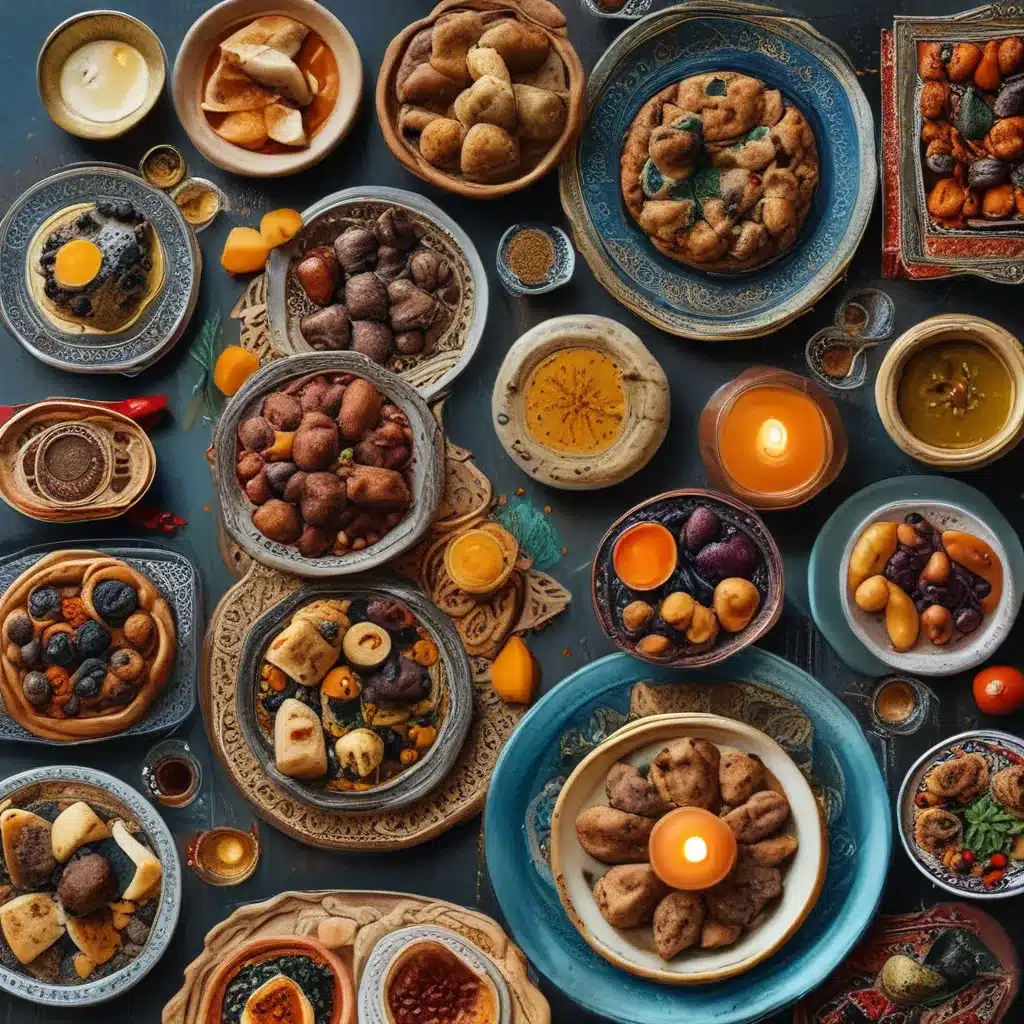
Savoring the Flavors of Ramadan at El Bahia
It’s the final week of Ramadan, and the air in New York City is thick with anticipation. As the sun dips below the horizon, families and friends eagerly gather around tables laden with an array of fragrant, mouth-watering dishes. This is the time for Iftar, the celebratory meal that breaks the day’s fast, and at El Bahia, our Moroccan restaurant, we’re honored to be a part of this cherished tradition.
Welcoming the Iftar Feast
As I step into the kitchen, the rich, tantalizing aromas of classic Moroccan spices envelop me. Our chefs are busily preparing the Iftar spread, their movements graceful and choreographed, like a well-rehearsed dance. I can’t help but be drawn in, eager to lend a hand and learn the secrets behind these time-honored recipes.
“Can you come in here for a minute, our friend?” one of the chefs says, flashing me a warm smile. “My wife and daughter need a taster.” I follow him, excitement bubbling within me. This is my chance to be a part of the magic unfolding in the kitchen.
Immersed in the Flavors of Fez
As I dip the spoon into the bubbling broth, the flavors explode on my tongue – a perfect balance of savory and subtlety. “It’s perfect,” I nod, but then add, “Does it have enough salt?” The women in the kitchen exchange a stern look, as if I’m withholding a crucial piece of knowledge. Quickly, one of them reaches for a jar of sea salt, sprinkling it over the pot. “Enough salt. Yes, yes,” I insist, still not quite sure how to convey the sentiment in Arabic.
The kitchen erupts in beaming smiles, and I’m enveloped in a warm sense of belonging. This is my first time in Morocco during Ramadan, and I’m honored to be invited to share the table with a Fassi family. As I step out of the kitchen, I’m struck by the bustling energy and the sweet-and-savory aromas that fill the air – a true feast for the senses.
The Ritual of Breaking the Fast
The dawn-to-dusk fasting during the holy month of Ramadan is the second of the five pillars of Islam, an act of self-purification and self-restraint. And Iftar, the meal that marks the end of each day’s fast, is a much-anticipated event, a time to come together and savor the flavors of the season.
At the Iftar table, the classics take center stage. Sweet dates and sips of water are always present, accompanied by a array of juices, teas, and sweets. But the heart of the meal lies in the savory dishes – the hearty soups, the slices of freshly baked bread, and the tempting pastries.
Signature Soups and Breads
The iconic soup of the Ramadan season is harira, a lentil and chickpea minestrone that’s often served with dates and drizzles of honey-dipped chebakia, a fried cookie. Another beloved option is bessara, a lightly spiced fava bean purée, garnished with olive oil and a sprinkle of cumin or paprika. Both soups pair beautifully with the unsweetened harcha, a semolina griddle cake akin to cornbread.
But the Iftar table is not complete without the myriad of Moroccan breads. From the fluffy, mlaoui (a type of folded crepe) to the yeasted batbout (similar to pita), these breads can be served plain, adorned with honey and cheese, or stuffed with savory fillings. And let’s not forget the beghir, an aerated pancake cooked on one side, perfect for dipping in honey or the nutty amlou paste.
Tempting Sweets and Pastries
As the Iftar meal progresses, the table is graced with an array of tempting sweets. The sellou, an unbaked crumble made from sesame seeds, fried almonds, and browned flour, is a staple, often served in a communal bowl for all to dip into. Then there are the almond briouats, delicate pastries wrapped in filo-like warka dough, filled with almond paste and flavored with orange blossom water and cinnamon.
But the Iftar feast doesn’t stop there. The savory briouats are also a highlight, with fillings like spiced fish, creamy egg salad, or even cheese. I’m tempted to try my hand at making these delectable pastries, perhaps experimenting with a tuna-filled version using spring roll wrappers, or the cheese-filled briouats from Epicurious.
The Art of Moroccan Mint Tea
As the late-evening meal unfolds, the signature Moroccan mint tea takes center stage. For many, this aromatic, foamy elixir is a must-have after a day of fasting. The base is gunpowder green tea, steeped with fresh mint leaves and often sweetened to taste. While the traditional way is to pour the tea from a height to create a frothy head, I’ve learned that it’s perfectly acceptable to request a lightly sweetened or even unsweetened version – the flavors should shine through without being overpowered by sugar.
Celebrating Ramadan, Celebrating Community
Iftar is a truly special occasion, a fitting backdrop to the observance of the holy month of Ramadan. The warm camaraderie and the sense of community that permeates this celebratory meal make it all the more meaningful. Even some non-Muslims in Fez, Morocco, have been known to fast in solidarity with their Moroccan neighbors, as Moulay Idriss resident and hotel owner Rose Button shared in a past article.
As I reflect on my experiences in Morocco, I’m struck by the depth of tradition and the reverence for family and community that infuses every aspect of Ramadan. And here at El Bahia, we strive to capture that essence, to bring the flavors and the spirit of Moroccan Iftar to our diners in New York City. So, as the sun sets and the fast is broken, we invite you to join us in celebrating the rich tapestry of Moroccan culinary traditions.


